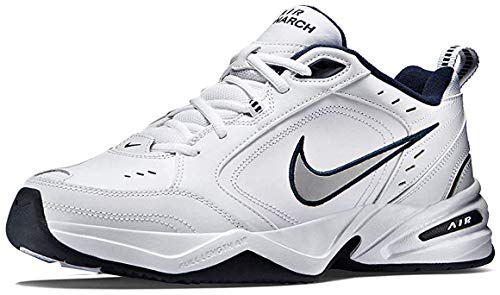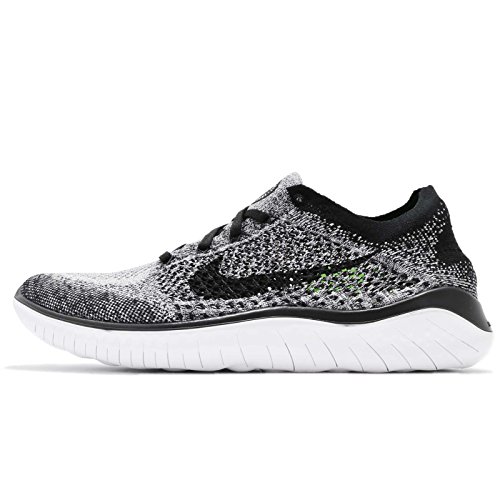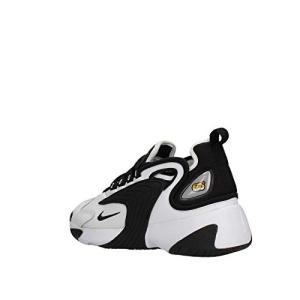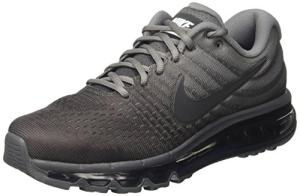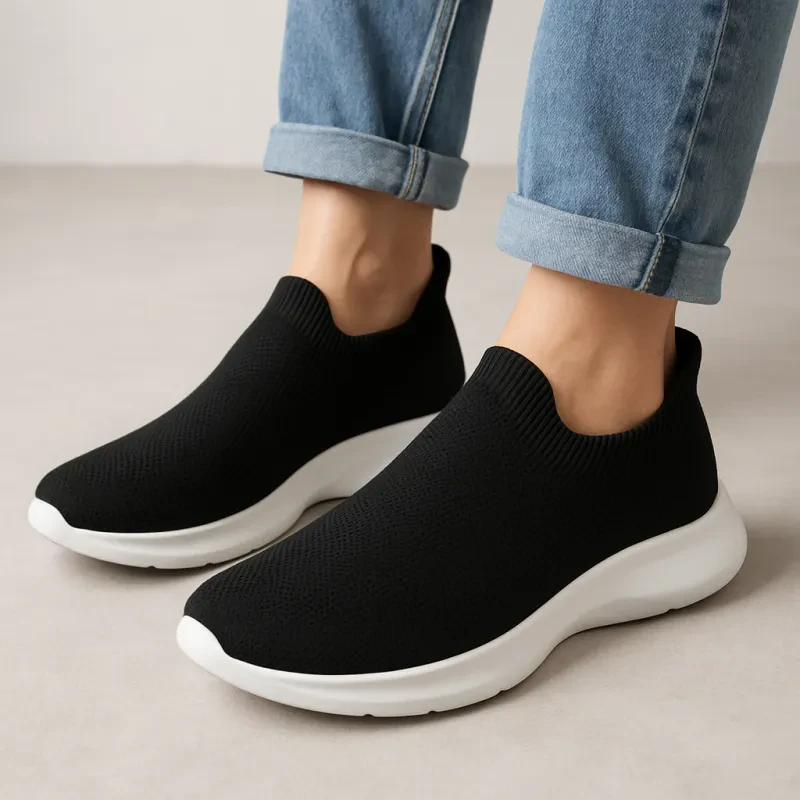Introduction:
Sneakers play a crucial role in athletic performance, influencing how individuals run, jump, and move. The advancements in sneaker design, particularly in running shoes, have been impressive over the past few decades.
Well-designed sneakers can enhance performance by providing support, cushioning, and stability, ultimately helping athletes perform better and reduce the risk of injuries.
The sneaker industry has seen significant growth as more athletes recognize the impact of footwear on their performance. Features such as midsole material, shoe stiffness, and overall weight can directly affect how athletes experience their workouts or competitions.
With the right pair, runners can improve their efficiency and comfort, allowing them to train longer and push their limits.
Research shows that even small changes in sneaker design can lead to noticeable differences in performance. Athletes must consider how their footwear choices tie into their overall strategy for improvement.
Understanding the relationship between sneakers and athletic performance can empower them to make informed decisions that drive their success.
The Evolution of Athletic Footwear
Athletic footwear has transformed significantly over the years. From the earliest designs to today's high-tech shoes, each phase reflects changes in both technology and culture. Key milestones, technological innovations, and the influence of major brands have all contributed to the sneakers worn by athletes today.
Historical Milestones in Sneaker Design
The journey of athletic footwear began in the 1860s with the first rubber-soled shoes, known as plimsolls.
Keds, released in 1916, marked the arrival of the modern sneaker, allowing for better performance in sports.
The 1970s and 1980s saw sneakers gain popularity as fashion items, largely due to brands like Nike and Adidas, as well as endorsements from athletes.
The introduction of iconic models, such as the Converse Chuck Taylor All-Star, made sneakers a staple in both sports and everyday life.
Significant events like the launch of the Air Jordan line in 1984 changed sneaker culture forever, blending sport and style.
Technological Advancements and Materials
Footwear science has played a crucial role in the evolution of athletic shoes. Early designs focused on function, using basic materials like canvas and rubber.
The introduction of advanced materials, such as lightweight synthetics, foam cushioning, and breathable fabrics, has led to better support and comfort.
Brands like Nike and Adidas have pioneered innovations, like Nike's Air technology introduced in the late 1970s.
This technology uses air-filled pockets to reduce impact. Other advancements include moisture-wicking materials and 3D printing, allowing for customized fits, proving that modern sneakers are designed for both performance and athlete comfort.
Influence of Iconic Brands and Athletes
Major brands have significantly impacted athletic footwear development. Nike, founded in 1964, revolutionized running shoes with its innovative designs and marketing strategies.
Adidas became known for its focus on high-performance basketball and soccer shoes.
Collaboration with athletes, notably the partnership with Michael Jordan, paved the way for lifestyle sneaker collections.
Puma has also left its mark with designs that resonate in both sports and fashion.
These brands continuously push boundaries, addressing athletes' needs while influencing sneaker culture worldwide, shaping consumer trends and expectations in athletic footwear.
Biomechanics and Performance
Biomechanics is essential in understanding how athletic footwear affects performance. The interaction between running style and sneaker design can significantly impact running efficiency, athletic output, and customization options for individual athletes.
Running Efficiency and Footwear Interaction
Running efficiency refers to how effectively a runner uses energy while in motion. Footwear plays a major role in this aspect.
Shoes with optimal stiffness and longitudinal bending stiffness can enhance running economy. A well-designed midsole can provide the right balance between cushioning and support.
Shoes that are too soft may absorb energy that the runner could otherwise use, leading to inefficient movement.
Conversely, models with a firmer midsole can offer better energy return, enabling them to maintain speed with less effort. This interaction between shoe features and running style directly influences athletic performance.
Influence of Sneakers on Athletic Output
The type of sneaker used affects athletic output significantly. Shoes designed for specific sports can enhance speed, agility, and comfort, impacting overall performance.
For instance, running shoes with a cushioned upper and supportive fit can reduce fatigue and lower the risk of injury, allowing athletes to train longer and more effectively.
They also help maintain proper foot alignment, which can reduce strain on muscles and joints.
The right footwear can lead to a noticeable improvement in personal records during competitive events, highlighting the importance of selecting appropriate sneakers tailored to an athlete's unique biomechanical needs.
Customization and Orthotics for Athletes
Customization is critical in athletic footwear. Many athletes use orthotics to enhance comfort and support, particularly during intense training sessions.
Custom insoles can improve stability and redistribute pressure, accommodating individual foot shapes and gait patterns.
These custom solutions cater to specific biomechanical issues, potentially leading to enhanced performance.
Athletes often seek shoes with adjustable features, such as removable insoles or customizable lacing systems, to achieve a better fit.
Properly fitted footwear lowers the risk of injury and contributes to better running efficiency, empowering athletes to perform at their best.
Health and Safety Considerations
Athletic footwear plays a critical role in health and safety for athletes. Proper shoe selection can reduce injury risks and improve performance. It is essential to consider factors such as impact force and joint health, as well as the role of footwear in preventing sports injuries.
Impact Force and Joint Health
Running and jumping generate high impact forces that can strain joints. Sneakers with adequate cushioning help absorb these forces, minimizing stress on the knees, hips, and ankles.
Shoes that offer proper arch support can enhance stability and prevent injuries associated with overpronation or supination.
In contrast, minimalist running shoes may expose athletes to greater impact forces, leading to possible injury.
Athletes should carefully assess their foot type and running style when selecting footwear.
Shoes designed specifically for activities like basketball or running often feature technology that reduces impact and supports joint health.
The Role of Footwear in Preventing Sports Injuries
Proper footwear can significantly reduce the risk of common sports injuries.
For example, basketball shoes provide ankle support, which is vital during quick lateral movements.
Running footwear, on the other hand, is designed to optimize running performance while offering cushioning to absorb impact.
Additionally, shoes with a solid grip can prevent slips and falls.
Athletes must choose footwear tailored to their sport's specific demands. As injury risks vary by activity, understanding individual needs can enhance performance and safety.
Evaluating construction, fit, and comfort is critical for effective injury prevention.
Sustainability and the Sneaker Industry
The sneaker industry is undergoing significant changes to address sustainability. More brands are adopting eco-friendly practices and materials, leading to a shift in consumer awareness and preferences. This transformation helps to reduce the environmental impact of footwear production.
Eco-Friendly Materials in Sneaker Manufacturing
Many sneaker brands are now using eco-friendly materials to reduce their carbon footprint.
These materials include recycled plastics and organic cotton. By incorporating these sustainable inputs, companies can reduce waste and pollution.
For example, recycled polyester can come from discarded water bottles, reducing plastic waste.
Brands also explore methods like 3D printing, which minimizes material usage and allows for on-demand production.
This not only lessens waste but also creates more customized fits for consumers.
Brands Leading the Way in Sustainability
Some brands are setting a high standard in sustainable practices.
Nike is focused on reducing its environmental impact through various initiatives. Its "Move to Zero" campaign aims for zero carbon and zero waste.
Adidas has made strides with its Parley line, which uses ocean plastic to create footwear.
Other companies, like ASICS, are designing shoes with fewer parts, reducing material consumption.
These brands not only focus on sustainability but also promote it as part of their identity, appealing to environmentally-conscious consumers.
Consumer Awareness and Cultural Shifts
Consumer awareness around sustainability in the sneaker market is rising. More buyers are considering the environmental impact of their purchases.
This shift leads them to favor brands that demonstrate a commitment to sustainable practices.
Sneaker culture, historically tied to style and status, is evolving. Consumers now seek products that align with their values.
This change is prompting brands to highlight their sustainable efforts and materials.
As a result, sustainability is becoming a key cultural symbol in the athletic footwear market. Buyers are increasingly drawn to sneakers that not only look good but also contribute positively to the environment.




